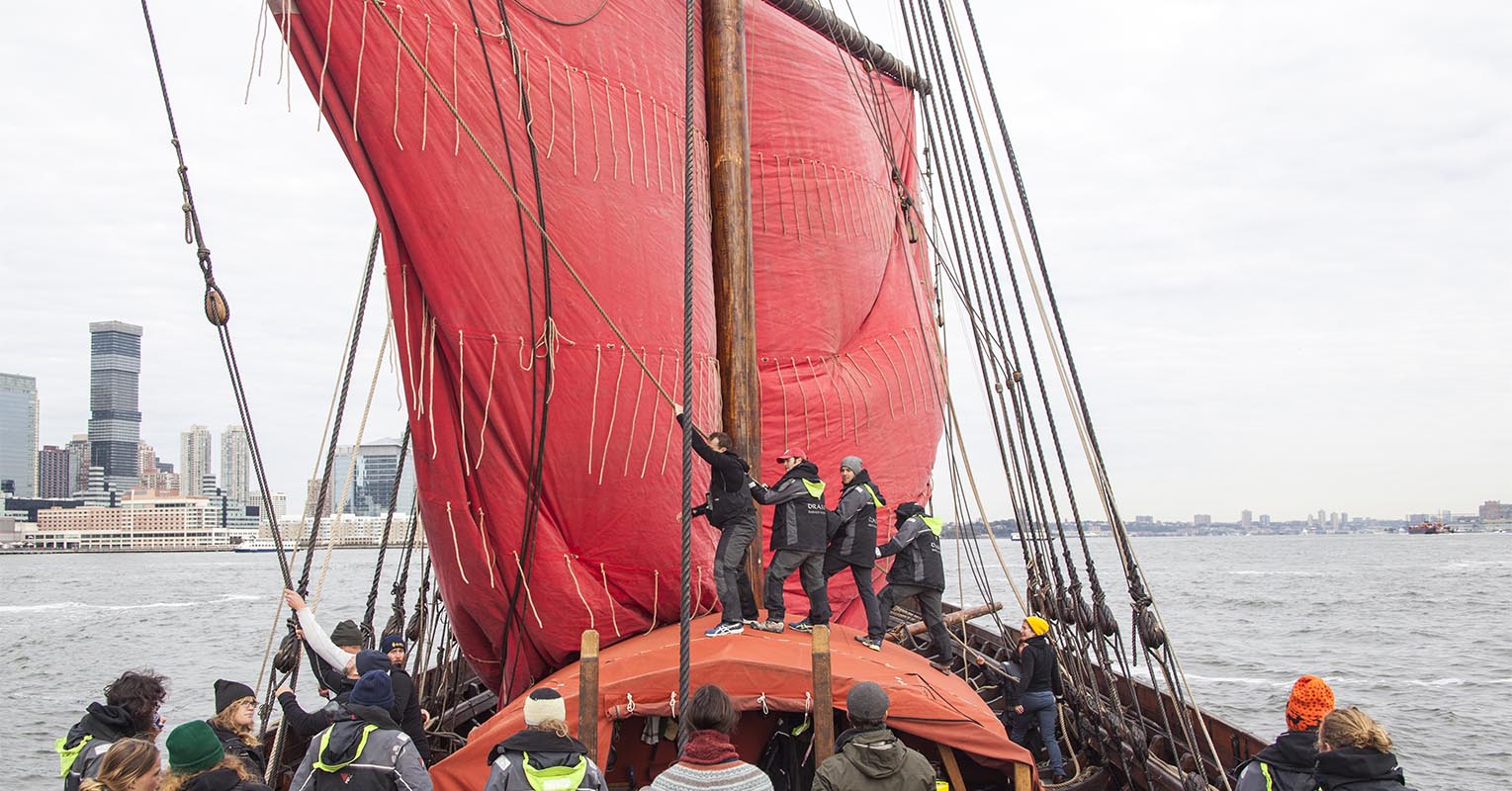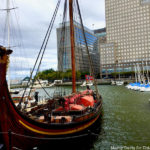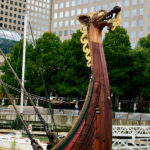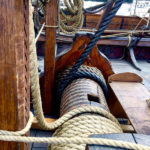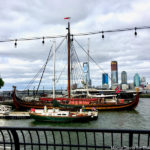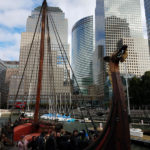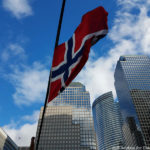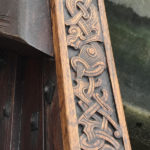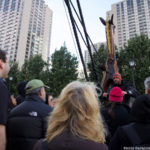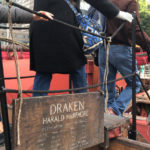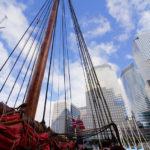The Draken Harald Hårfagre, a 115-foot long wooden Viking ship, spent the last few days of its East Coast American Expedition docked at New York City’s North Cove Marina and Untapped Cities Insiders were invited on board! You too can gain access to free behind-the-scenes like this one by becoming a member today. Insiders braved the wind and cold of a brisk Sunday morning to meet the crew on a private deck tour and to get a taste of Viking life aboard the Draken, the largest ship of its kind built in modern times, and our Untapped Cities team got to go for a sail courtesy of Highland Park, a whisky distiller from the Orkney Islands in Scotland, a place with Viking roots.
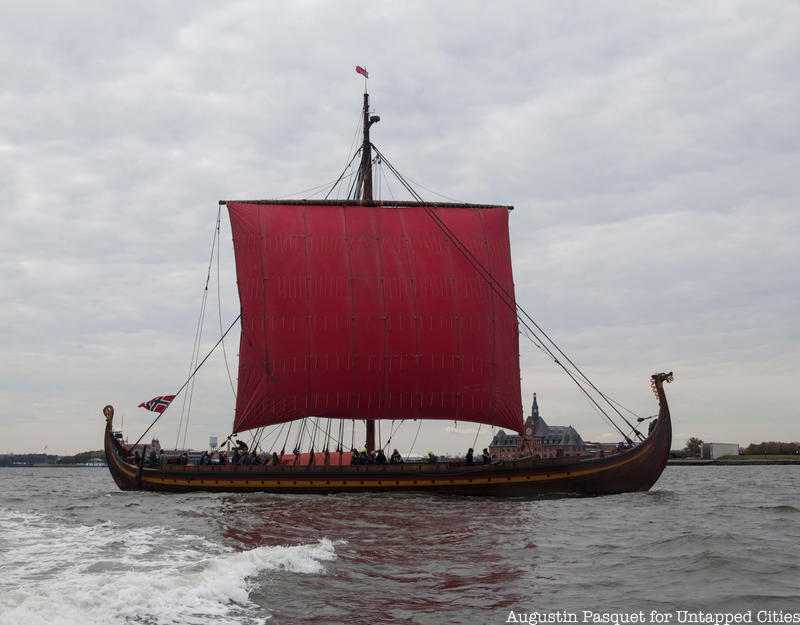
The towering mast of the Draken, its ornamented wooden hull, and dragon headed bow were an incongruent site to see against the backdrop of Lower Manhattan skyscrapers and modern sailing vessels docked alongside it in the marina. The Draken was built by historians and craftsmen in Norway, between 2010 and 2012, based on research from archeological digs, Norse legends, visual and foreign accounts of Viking boats, old sailing records, and Norwegian ship building know-how. The Vikings themselves didn’t leave any written records of their ship building techniques. It is not a replication of any one specific ship, but a reconstruction of what Norse Sagas refer to as a “Great ship.” The route of the ship’s East Coast American expedition followed the historical route sailed across the Atlantic Ocean by the Vikings that led to the discovery of the Americas more than 1,000 years ago.
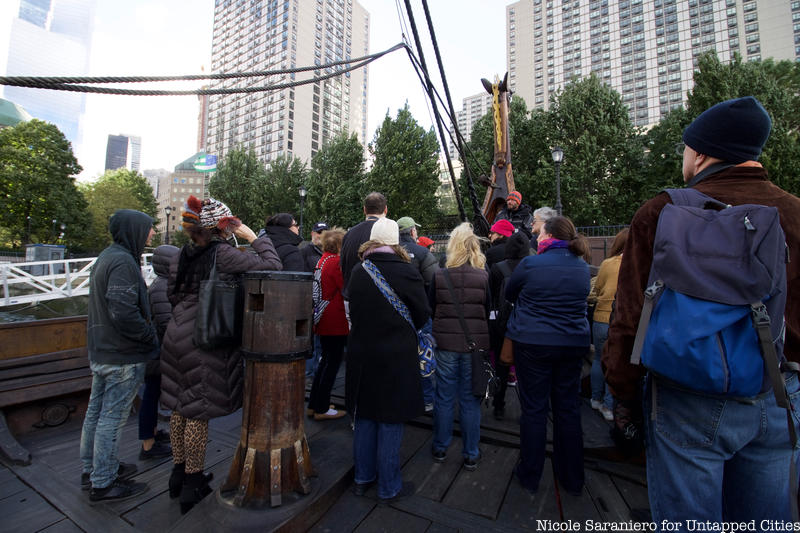
Our Viking journey started at the bow of the ship where a member of the crew, a marine craftsman, told our group all about the ship’s construction. The hull of the ship is made of oak, the deck of pine and spruce and the 79-feet tall mast is made from a single Scottish Douglas Fir tree. The mast holds the ship’s 3,200-square-foot silk sail, which together with the yard weighs a combined 3,000 pounds. Raising the sail is a complicated and dangerous maneuver which can take the crew up to forty five minutes to complete.
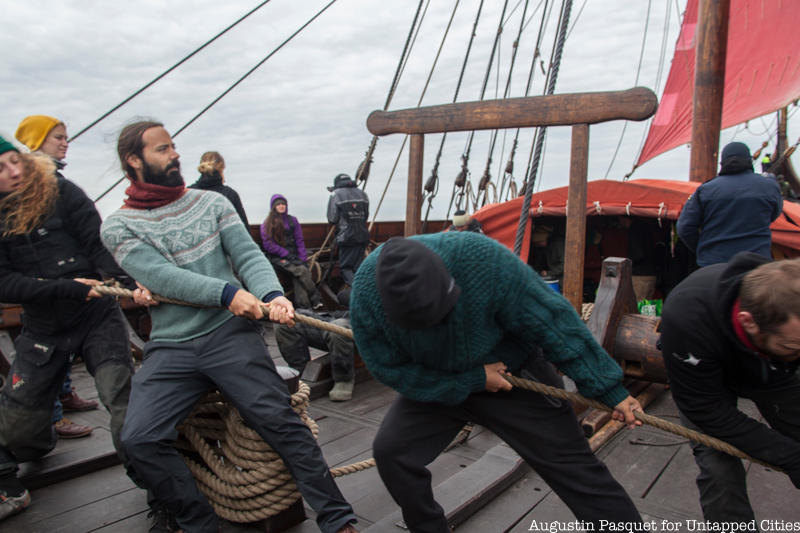
The planks of the ship are held together with over 10,000 clinkers, or very, very long nails that can take anywhere from 100 to 1,000 hits to get in. Standing on the deck, you notice that the planks are loose beneath your feet. This is an intentional engineering feature designed to give the extremely long ship flexibility on the seas.
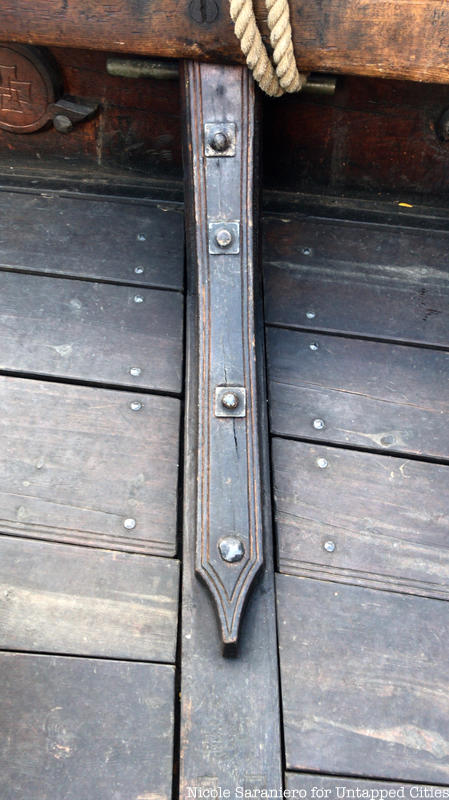
Walking along the ship you notice ornamental patterns and symbols intricately carved into the wood. These patterns were inspired by those found on excavated Viking ships. Attached to the bow is a small piece of ash, a symbol of the Norse tree of life, with three runes carved into it. These runes stand for protection, strength and communication, essential qualities for survival at sea.
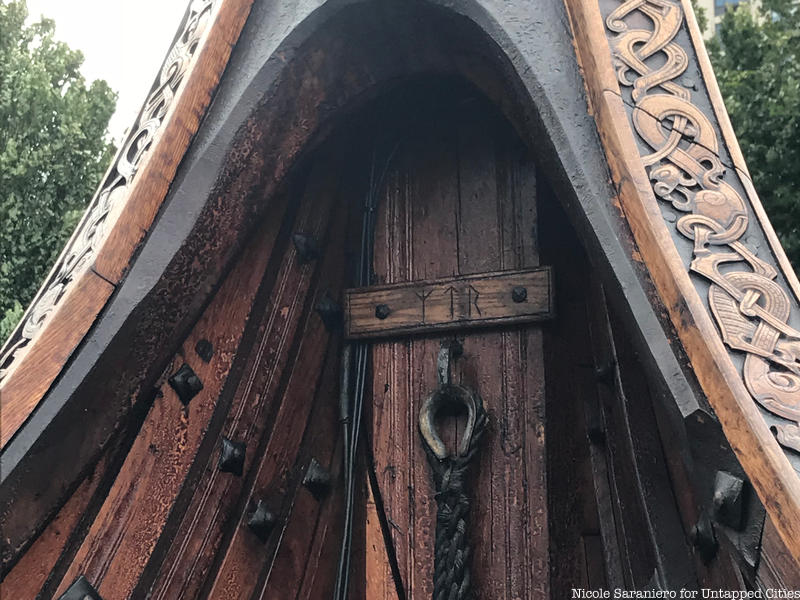
As our tour moved towards the stern of the ship, we uncovered more symbols taken from Norse mythology. The two black raven sculptures that flank the captain as he steers the ship represent knowledge and thought. In Norse mythology, these ravens belong to the god Odin and they fly around the world collecting information to report back to him as they perch on his shoulders.
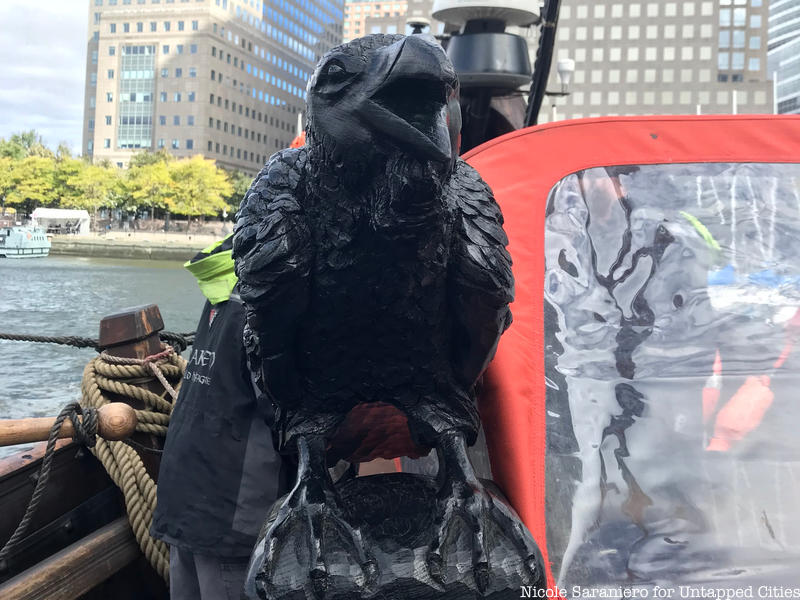
The Draken is manned by a crew of thirty-two men and women from all over the world. Historically, a Viking ship would have a crew of 100 to 150 people. It would take 100 men just to propel the ship with the fifty oars on board, two men per oar. The crew, along with Captain Björn Ahlander, share very tight quarters. Sleeping arrangements consists of four large beds that everyone shares. Only the captain has a designated spot, but his space is no larger than the rest of his crew. While the accommodations on board are by no means luxurious, they are certainly better than what the Vikings would have had. Whereas today’s crew sleeps below deck and has a tent covered galley, the Vikings would have had only one small tent to cover their cooking fire and would sleep on the open deck, though some crew members choose to sleep on deck on when pleasant weather conditions allow it.
Captain Ahlander has a penchant for historical ships, spending two years sailing a multi-masted clipper freight ship to China before he joined the crew of the Draken. He was also the master rigger on the Hermione, the replica of Lafayette’s ship that visited New York City in 2015. On board the Draken, he regaled us with stories from the ship, including the cold temperatures and high winds on the cross-Atlantic trip, and the challenges of navigating through icebergs. He says romance is a part of life and he actually married two crew members in Greenland on the ship’s journey over.
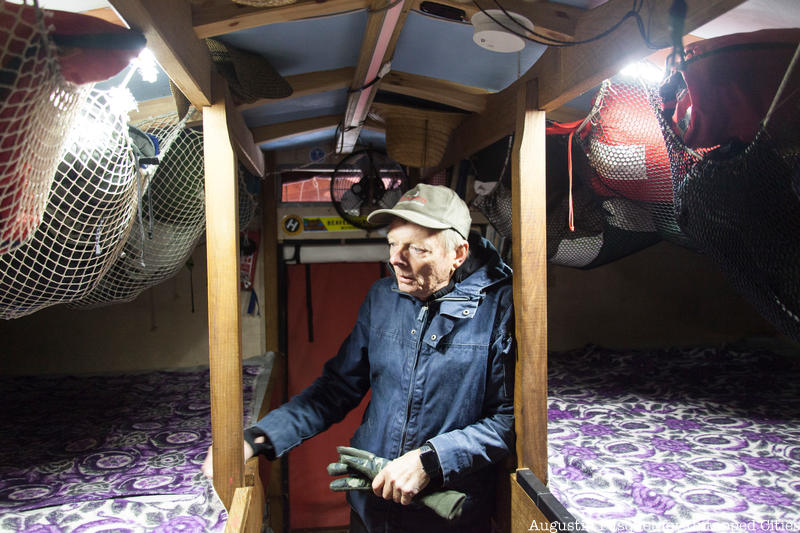 Captain Björn Ahlander showing us the sleeping quarters
Captain Björn Ahlander showing us the sleeping quarters
Ahlander even allowed the Untapped Cities to pilot the boat through the far less rough waters of the Buttermilk Channel between Governors Island and Brooklyn. Monday’s sail took us from Brookfield Place Marina to the Statue of Liberty, up the Buttermilk Channel, within view of the Brooklyn Bridge and back. After the sail, the Untapped Cities team was treated to tastings of Highland Park’s whisky, made on the island of Orkney in Scotland, which was originally settled by Vikings. We tried the Valknut, a special edition single-malt whisky, part of a series designed in partnership with Danish designer Jim Lyngvil called Viking Legends, inspired by the rich Viking heritage and mythology of Highland Park’s Orkney Islands home. The word Valknut means “knot of those slain in battle.” We also tried The Light, a 17-year-old single-malt Scotch whisky released in summer 2018.
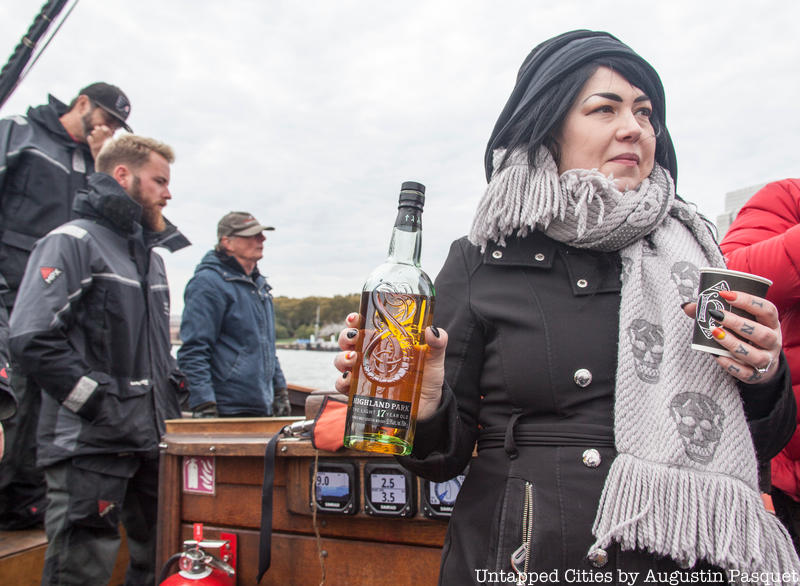
Touring and sailing aboard the Draken was an experience like no other in New York City and is one of the many unique experiences you can take part in as an Untapped Cities Insider. Become a member today to join Untapped Cities on our next adventure! You can see the full list of upcoming Insider events here and check out more pictures from our tour and sailing expedition below:
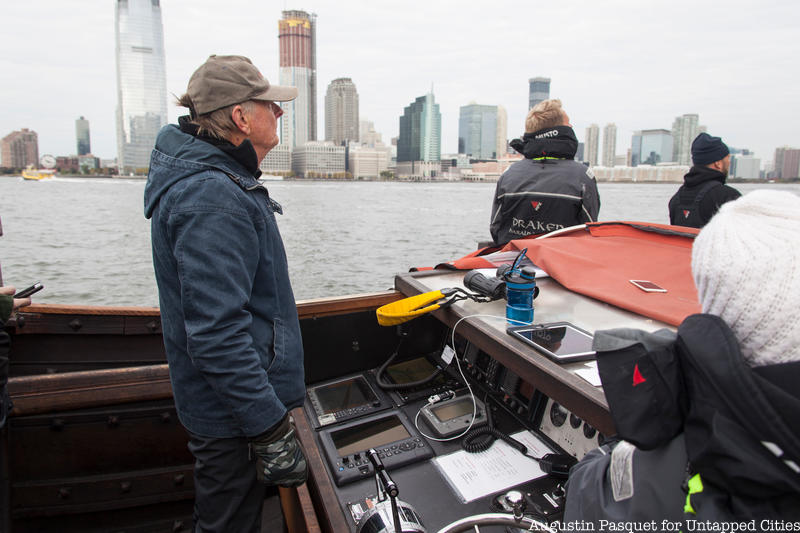
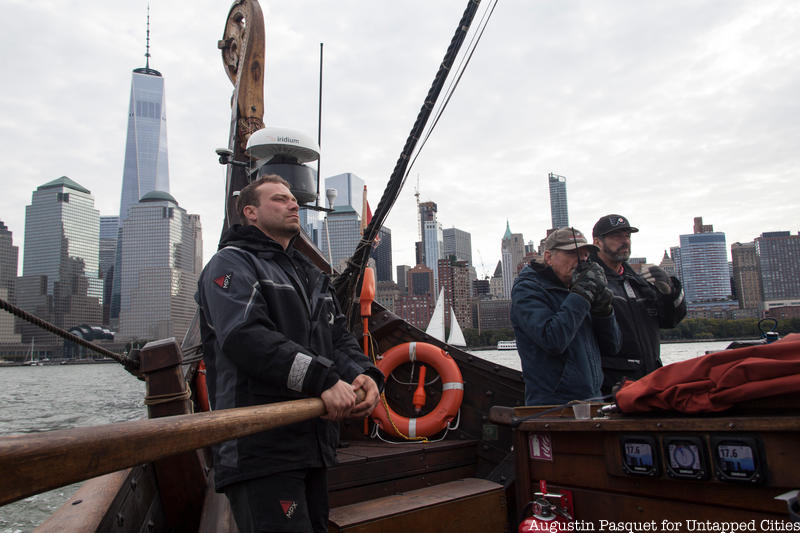
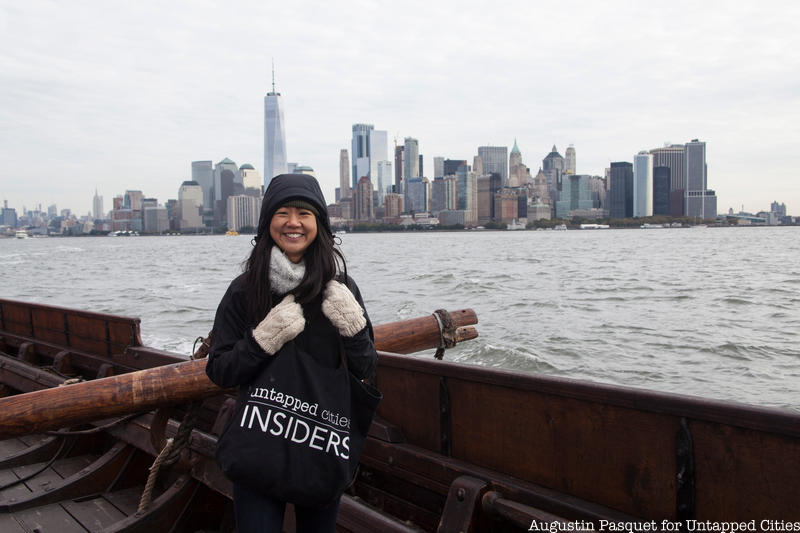
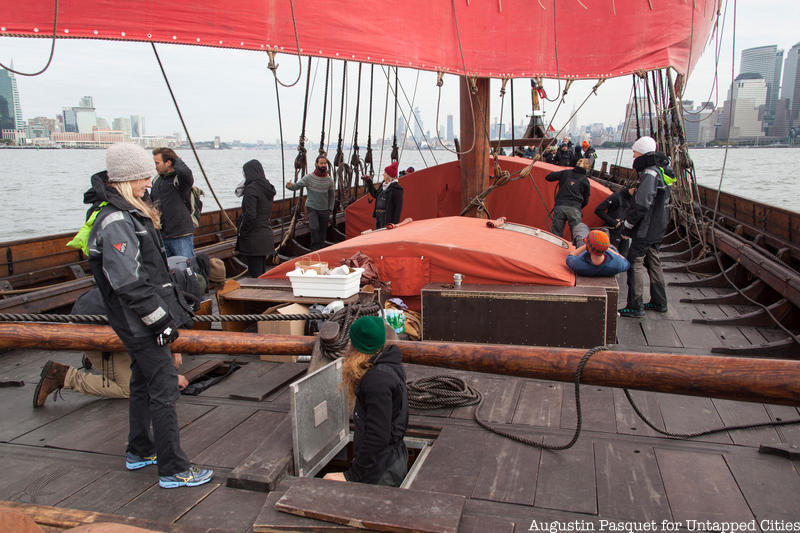
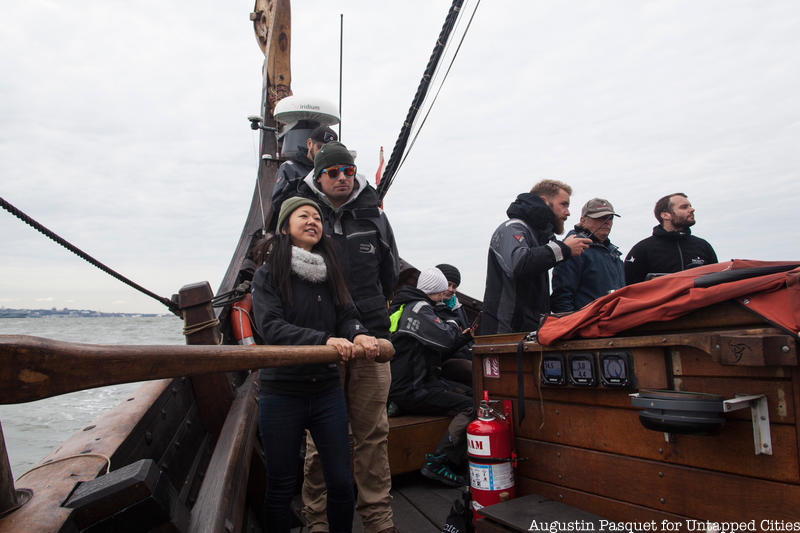
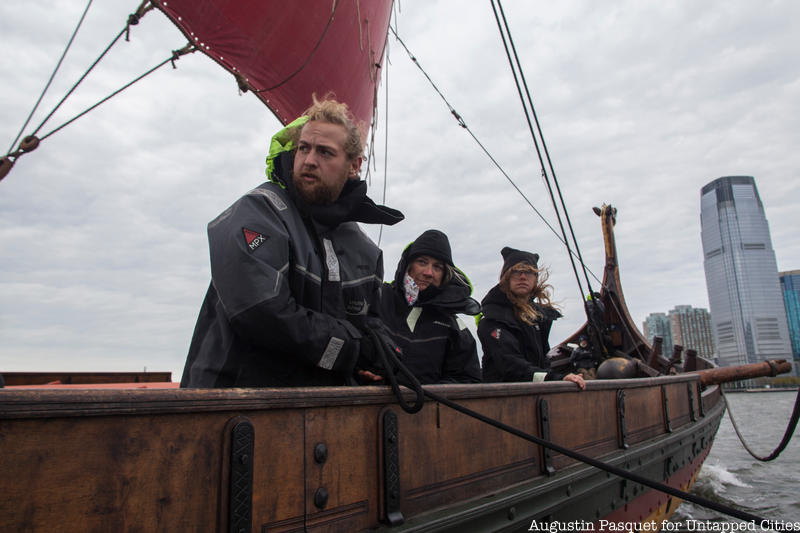
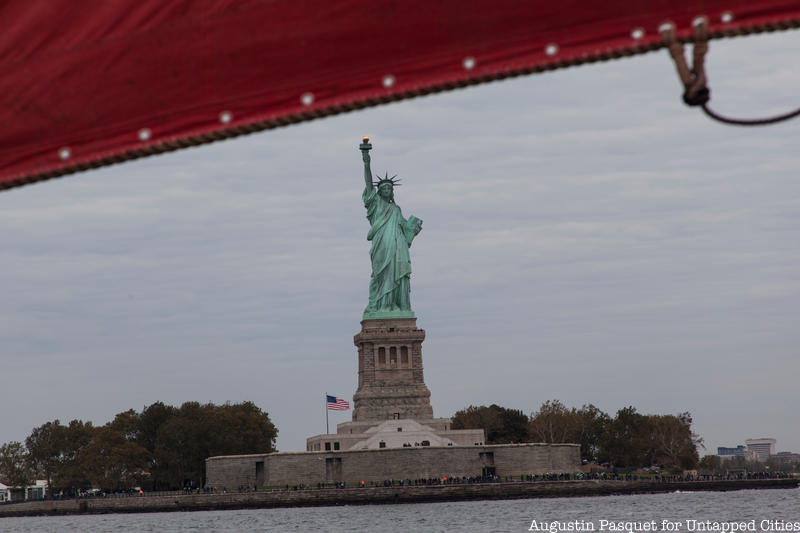
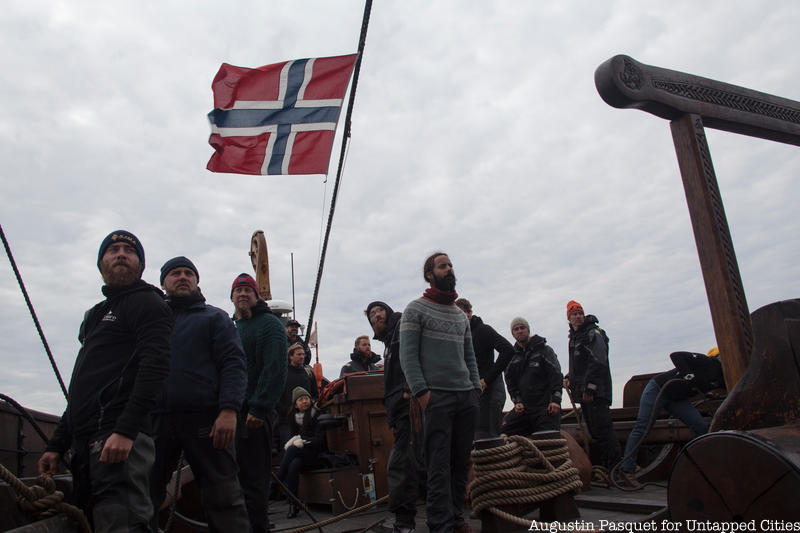
Check out more photos taken by our Insiders:
Next, check out The Top 10 Abandoned and Retired Boats in NYC (and one in New Jersey)






